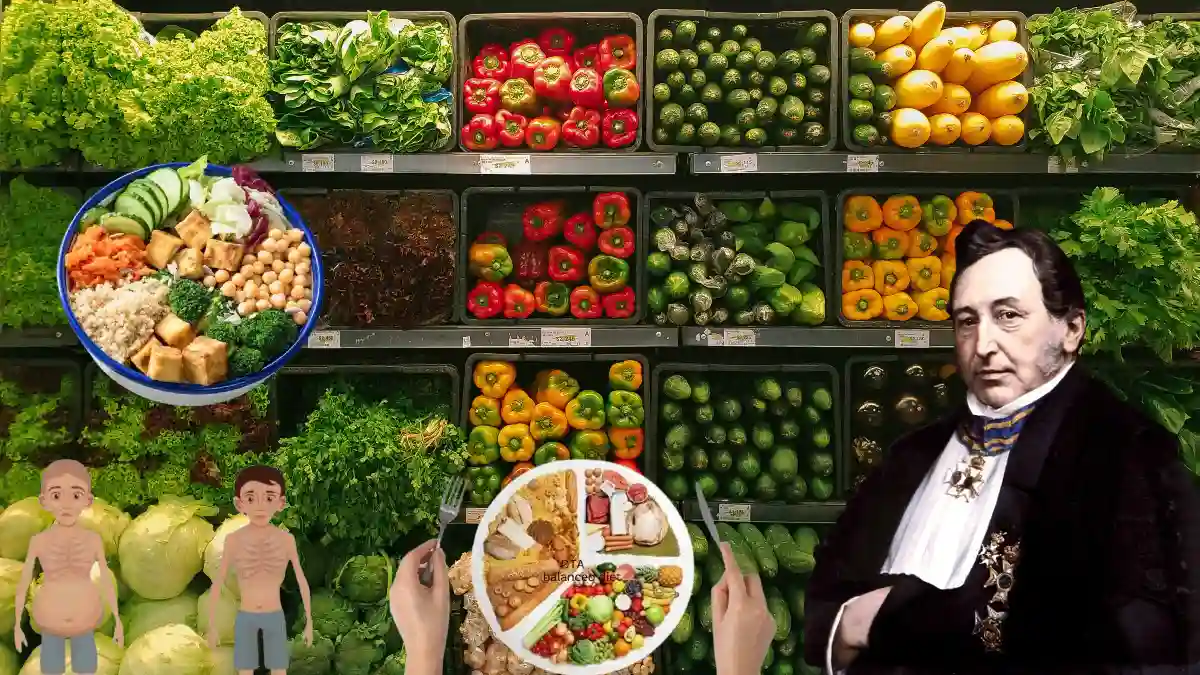പ്രോട്ടീനുകൾ എന്നാൽ എന്താണ്

സമീകൃതാഹാരം:
ശരീരത്തിനാവശ്യമായ എല്ലാതരം പോഷകങ്ങളും ശരിയായ അളവിൽ അടങ്ങിയ ആഹാരമാണ് സമീകൃതാഹാരം. കൂടിയ അളവിൽ ആവശ്യമായ പോഷകങ്ങളും കുറഞ്ഞ അളവിൽ മാത്രം ആവശ്യമായ പോഷകങ്ങളുമുണ്ട്. കാർബോഹൈഡ്രേറ്റ് അഥവാ ധാന്യകം. ലിപ്പിഡ് അഥവാ കൊഴുപ്പ്. പ്രോട്ടീൻ അഥവാ മാംസ്യം എന്നിവയാണ് ആദ്യ വിഭാഗത്തിൽപ്പെട്ട പോഷകങ്ങൾ. വിവിധതരം വിറ്റാമിനുകളും ധാതുക്കളും കുറഞ്ഞ അളവിൽ മാത്രം ആവശ്യമുള്ള പോഷകങ്ങളാണ്.
പ്രോട്ടീനുകൾ പലതരം:
ജൈവതന്മാത്രകളുടെ കൂട്ടത്തിൽ വൈവിധ്യത്തിൻ്റെ കാര്യത്തിലും ഒന്നാമൻ പ്രോട്ടീനുകൾ ആണ്. ഒരു കോശത്തിൽ വൈവിധ്യമാർന്ന ആയിരക്കുന്നതിന് പ്രോട്ടീനുകളുണ്ട്. ഭക്ഷണത്തിൽ നിന്ന് ലഭിക്കുന്ന പ്രോട്ടീനുകൾ അതേപടി ഉപയോഗിക്കുകയാണ് കോരങ്ങൾ എന്നാണോ നിങ്ങൾ ധരിച്ചിരിക്കുന്നത്? എന്നാൽ അങ്ങനെയല്ല. ആഹാരത്തിൽ അടങ്ങിയ പ്രോട്ടീനുകൾ ദഹനരസങ്ങളുടെ പ്രവർത്തനം മൂലം ഘടകങ്ങളായി വിഘടിക്കപ്പെടും. ഈ ഘടകങ്ങളെ അമിനോ ആസിഡുകൾ എന്നാണ് പറയുന്നത്. ഈ അമിനോ ആസിഡുകളാണ് കുടലിൽ നിന്നും ശരീരത്തിലേക്ക് ആഗിരണം ചെയ്യുന്നത്. അമിനോ ആസിഡുകൾ ഉപയോഗിച്ച് ജീനുകളുടെ നിർദേശ പ്രകാരം ആവശ്യമായ പ്രോട്ടീനുകൾ നിർമ്മിക്കാനുള്ള കഴിവ് കോശങ്ങൾക്കുണ്ട്.


പ്രോട്ടീൻ കുറഞ്ഞാൽ:
ആഹാരത്തിലെ പ്രോട്ടീനുകളുടെ കുറവ് പല ആരോഗ്യപ്രശ്നങ്ങൾക്കും കാരണമാകും. ദുർബലമായ പേശികൾ, കാലുകളിലെ വീക്കം, മുടികൊഴിച്ചിൽ, മുറിവുകൾ വേഗത്തിൽ ഉണങ്ങാതിരിക്കുക എന്നിവ ചില ലക്ഷണങ്ങളാണ്. പ്രോട്ടീനിൻ്റെ കുറവ് ദീർഘകാലം തുടരുകയാണെങ്കിൽ ഉണ്ടാകാവുന്ന ഗുരുതരമായ ഒരു രോഗമാണ് ക്യാഷിയോർക്കർ. ഉന്തിയ വയർ, കാൽപ്പാദങ്ങളിലെ വീക്കം, മുടി കൊഴിച്ചിൽ, പല്ല് പൊടിഞ്ഞു പോവുക, ത്വക്കിലെ നിറവിത്യാസം, കൊഴുപ്പ് നിറഞ്ഞ കരൾ മറ്റ് അവയവങ്ങളിലെ തകരാറുകൾ തുടങ്ങിയവയാണ് ചില പ്രധാന ലക്ഷണങ്ങൾ.
പ്രോട്ടീനിൻ്റെ പ്രാധാന്യം:
ശരീരത്തിൻ്റെ വിവിധയിനം പ്രവർത്തനങ്ങൾക്ക് പ്രോട്ടീനുകൾ അത്യന്താപേക്ഷിതമാണ്. ധർമങ്ങളുടെ അടിസ്ഥാനത്തിൽ പ്രോട്ടീനുകളെ ഏറ്റവും കുറഞ്ഞത് ഏഴായി തരംതിരിക്കാം. ആൻ്റിബോഡികൾ(രോഗങ്ങളെ ചെറുക്കാൻ സഹായിക്കുന്ന പ്രോട്ടീനുകൾ), മാംസപേശികളുടെ സങ്കോചത്തിനും ചലനത്തിനും സഹായിക്കുന്ന പ്രോട്ടീനുകൾ. രാസത്വരകങ്ങൾ അഥവാ എൻസൈമുകൾ(ശരീരത്തിലെ രാസപ്രവർത്തനങ്ങളുടെ വേഗത കൂട്ടുന്ന പ്രോട്ടീനുകൾ), ഹോർമോണുകൾ, നിർമ്മാണപ്രോട്ടീനുകൾ(നമ്മുടെ മുടിയും നഖവും നിർമ്മിച്ചിരിക്കുന്നത് പ്രധാനമായും പ്രോട്ടീനുകൾ കൊണ്ടാണ്), സംഭരണ പ്രോട്ടീനുകൾ (അമിനോ ആസിഡുകളെയും ലോഹങ്ങളെയും സംഭരിച്ചുവെയ്ക്കുന്ന പ്രോട്ടീനുകൾ), വാഹക പ്രോട്ടീനുകൾ(തന്മാത്രകളെ ഒരിടത്തുനിന്നും മറ്റൊരിടത്തേക്ക് വഹിച്ചു കൊണ്ടു പോകുന്ന പ്രോട്ടീനുകൾ. ഉദാഹരണത്തിന് രക്തത്തിൽ ഓക്സിജൻ വഹിച്ചു കൊണ്ടു പോകുന്ന ഹീമോഗ്ലോബിനിലെ പ്രോട്ടീൻ) എന്നിവയാണ് ഈ ഏഴുതരം പ്രോട്ടീനുകൾ. ഇവയ്ക്കു പുറമേ ജീവികളുടാക്കുന്ന വിഷവും പ്രോട്ടീനുകളാണ്. ഉദഹരണത്തിന് പാമ്പുകളുടെ വിഷം.


പ്രോട്ടീനുകളടങ്ങിയ ഭക്ഷണം:
മത്സ്യം, മാംസം, പാൽ, മുട്ട എന്നിവയാണ് പ്രോട്ടീൻകൾ അടങ്ങിയ പ്രധാന മംസാഹാരങ്ങൾ. ഏറ്റവും കൂടുതൽ പ്രോട്ടീൻ സസ്യഹാരത്തിലാണ്. സസ്യഹാരികളുടെ പ്രധാന പ്രോട്ടീൻ സ്രോതസ്സ് വിവിധയിനം പയറുകളാണ്. ചെറുപയർ, വൻപയർ, കടല, തുവരപരിപ്പ്, സോയ. ഇതിൽ ഏറ്റവും കൂടുതൽ സോയയിൽ ആണ് 55% പ്രോട്ടീൻ അടങ്ങിയിട്ടുണ്ട്. പ്രായത്തിലും ലിംഗഭേദമനുസരിച്ചും ഒരു ദിവസം കഴിക്കേണ്ട പ്രോട്ടീനുകളുടെ അളവിൽ വിത്യാസമുണ്ട്. ഇന്ത്യൻ കൗൺസിൽ ഓഫ് മെഡിക്കൽ റിസർച്ചിൻ്റെ മാർഗ്ഗനിർദേശപ്രകാരം 10 -12 വയസ്സുള്ള ആൺകുട്ടികൾക്കും പെൺകുട്ടികൾക്കും ഒരു ദിവസം 35 ഗ്രാം പ്രോട്ടീനാണാവശ്യം. 13 – 15വയസ്സുള്ള ആൺകുട്ടികൾക്ക് 45 ഗ്രാം പ്രട്ടീനാവശ്യമുള്ളപ്പോൾ പെൺകുട്ടികൾക്ക് 40 ഗ്രാം മതി. പുരുഷ്യൻമാർക്ക് 60 ഗ്രാം വേണമെങ്കിൽ സ്ത്രീകൾക്ക് 55 ഗ്രാം മതി.
പ്രോട്ടീൻ എന്ന പേര് വന്നത്:
1838 ൽ ജെറാർഡസ് മർഡർ (Gerardus Mulder) എന്ന രസതന്ത്രജ്ഞനാണ് പ്രോട്ടീനുകളുടെ രാസഘടനയെക്കുറിച്ച് ആദ്യമായി വിശദീകരിച്ചത്. സുഹൃത്തും സ്വീഡനിലെ രസതന്ത്രജഞനമായിരുന്ന ജോൺസ് ബെർസേലിയസിൻ്റെ ( John Berzellus) നിർദേശ പ്രകാരമാണ് ഈ ജൈവപദാർത്ഥത്തിന് മൾഡർ പ്രോട്ടീൻ എന്ന പേര് സ്വീകരിച്ചത്. അതുകൊണ്ട് പ്രോട്ടീൻ എന്ന പേരിൻ്റെ സ്രഷ്ടാവ് ജോൺസ് ബെർസേലിയസാണ് ഏറ്റവും മുന്നിൽ നിൽക്കുന്നത് എന്ന് അർഥമുള്ള പ്രോട്ടീയോസ് (proteios) എന്ന ഗ്രീക്കു വാക്കിൽനിന്നാണ് പ്രോട്ടീൻ ഉണ്ടായത്.

What are proteins?

A balanced diet:
A balanced diet is a diet that contains all the nutrients required by the body in the right amount. There are nutrients that are required in high amounts and nutrients that are only required in low amounts. Carbohydrates or grains. Lipid or fat. The first category of nutrients is protein or meat. A variety of vitamins and minerals are nutrients that are needed only in small amounts.
Different types of proteins:
Proteins are the most diverse of biological molecules. A cell has proteins for thousands of different functions. Are you wearing cores that use the proteins from food as they are? But not so. Proteins in food are broken down into components by the action of digestive juices. These components are called amino acids. These amino acids are absorbed into the body from the intestines. Cells have the ability to use amino acids to make proteins as directed by genes.


If protein is low:
Deficiency of proteins in the diet can cause many health problems. Weak muscles, swelling in the legs, hair loss, and wounds not healing quickly are some of the symptoms. kwashiorkor is a serious disease that can develop if protein deficiency continues for a long time. Some of the main symptoms are distended belly, swollen feet, hair loss, tooth decay, skin discoloration, fatty liver and other organ damage.
Importance of protein:
Proteins are essential for many body functions. Proteins can be classified into at least seven groups based on their functions. Antibodies (proteins that help fight disease), proteins that help muscle contraction and movement. Catalysts or enzymes (proteins that speed up chemical reactions in the body), hormones, structural proteins (our hair and nails are made mainly of proteins), storage proteins (proteins that store amino acids and metals), and transport proteins (proteins that carry molecules from one place to another. For example, carrying oxygen in the blood These seven types of proteins are: In addition to these, proteins are also toxins produced by organisms. For example snake venom.


Foods rich in proteins:
Fish, meat, milk and eggs are the main sources of protein. Most protein is found in plant foods. The main source of protein for vegetarians is a variety of pulses. Chickpeas, broad beans, chickpeas, cowpeas, soy. Soy has the highest protein content of 55%. There is a difference in the amount of proteins that should be consumed in a day according to age and gender. According to Indian Council of Medical Research guidelines, 10-12 year old boys and girls need 35 grams of protein a day. Boys between the ages of 13 and 15 need 45 grams of protein, while girls need 40 grams. Men need 60 grams and women need 55 grams.
The name protein comes from:
In 1838, chemist Gerardus Mulder first explained the chemical structure of proteins. According to the suggestion of John Berzelus, who was a friend and a chemist in Sweden, the name Mulder protein was adopted for this biological substance. Therefore, the creator of the name protein, Jones Berzelius, is the foremost, and the protein comes from the Greek word proteios, which means “proteios”.








Leave a Reply